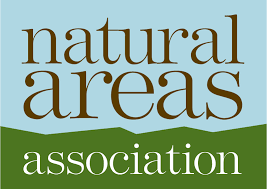Location
The Natural Areas Association is the only national, non-profit membership organization that is dedicated to the support and advancement of the community of natural areas professionals.
Together, we envision a world where science-based conservation is the bedrock of protecting the beauty and wonder of nature.
Our members work to protect and restore natural areas, ecosystems and landscapes, and include natural lands managers, natural resource managers, land trust staff and volunteers, biologists, ecologists, researchers, policy specialists, educators, students, and anyone with an active interest in environmental conservation and natural areas stewardship.
We:
- Support, nurture and advance the community of NA professionals
- Advance natural area conservation through access to the latest research findings, as well as emerging management techniques and conservation practices
- Promote an understanding and appreciation of natural areas, and the people who work to steward them
- Advocate for legislation that supports and funds initiatives important to natural areas
- Reflect the consensus of natural areas professionals through statements of policy
Members:
Resources
Displaying 6 - 10 of 12Vegetation Monitoring to Guide Management Decisions in Miami's Urban Pine Rockland Preserves
We developed a monitoring program to assess the health of urban fragments of pine rockland, a globally critically imperiled, fire-dependent plant community, in order to provide feedback for adaptive land management. Our results showed negative effects of fire exclusion, including low native herb and grass cover, excessive leaf litter accumulation, and high densities of native trees in most of the twelve preserves sampled.
Incorporating Risk of Reinvasion to Prioritize Sites for Invasive Species Management
The relationship between landscape pattern and the distribution and spread of exotic species is an important determinant of where and when management actions are best applied. We have developed an interdisciplinary approach for prioritizing treatment of harmful, nonnative, invasive plants in National Park landscapes of the Mid-Atlantic USA.
Cheatgrass (Bromus Tectorum) Seeds are Still Viable after Laundry Cycle
Bromus tectorum is expanding across western North America. This spread is due to its own competitive abilities, land management practices, and unintended transport by the public as the plant's spikelets often lodge in clothing. Many assume that washing in a laundry machine makes the seeds nonviable: we decided to test this assumption. We hypothesized that seeds would exhibit lower rates of germination and emergence after being laundered, and the effect would be stronger if bleach was used.
Miami-Dade County's Environmentally Endangered Lands Covenant Program: Creating Protected Areas on Private Lands via Financial Incentives
We review Miami-Dade County's Environmentally Endangered Lands (EEL) Covenant Program as a means to create protected areas on private property via financial incentives. Such incentives go a step beyond regulatory and fee simple approaches to conservation. The program is codified under Chapter 25B, Article II, of the Miami-Dade County Code as authorized by section 193.501, Florida Statutes.
Archaeological Analysis of Bison Jumps and the Implications to the Contemporary Management of Bison Herds on the North American Great Plains
The National Park Service (NPS) and other land management agencies have interest in managing bison herds under ânaturalâ conditions; yet demographic features of natural populations are not well described. One solution to this issue involves the analysis of historical bison (Bison spp.) jump data. We conducted a literature search of archeological data associated with bison jump sites in North America with the goal of analyzing the data and summarizing historical bison demographics. We identified six locations with adequate information to conduct vertical life-table analyses.


